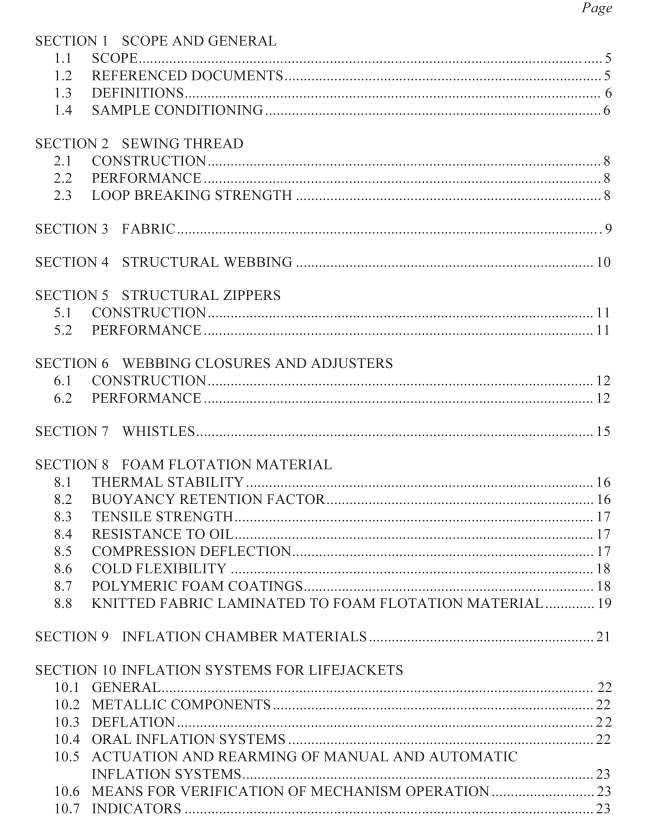AS 4758.2 pdf download – Lifejackets Part 2: Materials and components— Requirements and test methods

AS 4758.2 pdf download – Lifejackets Part 2: Materials and components— Requirements and test methods
6.1 CONSTRUCTION Closures and adjusters, such as buckles and slide adjusters shall comply with the criteria specified in Table 6.1 when subjected to the tests specified in that table. 6.2 PERFORMANCE
6.2.1 Tensile strength The assembly shall consist of the hardware component with two lengths of webbing 150 mm in length attached as they are for use. A constant rate-of-extension tensile testing machine with a rate of extension of 300 ±10 mm/s and jaws not less than the width of the webbing shall be used. A tensile load shall be applied until breakage, disengagement, slipping in excess of 75 mm or a similar condition occurs. The tensile load at failure shall be reported.
6.2.2 Strength/slippage An assembly consisting of the hardware component with webbing attached as for use shall be subject to a tensile load for 10 min using either the fixed straight-length method or the loop assembly methods as follows:
(a) Fixed straight-length method Two lengths of webbing not less than 600 mm in length shall be used to make up the assembly as shown in Figure 6.1(a). One end of the assembly shall be secured to a fixed point and a steady load shall be applied to the other.
(b) Loop assembly method The assembly shall be made up with a single piece of webbing not less than 1200 mm in length as shown in Figure 6.1(b).
The assembly loop shall be supported vertically over a cylinder and a second cylinder shall provide the means for applying a steady load [see Figure 6.1(b)].
6.2.3 Tab disengagement The assembly shall consist of the hardware component with two lengths of webbing not less than 600 mm in length attached as for use. One end of the assembly shall be secured to a rigid fixture and a mass of 2.25 kg shall be attached to the other end. The mass shall be raised 300 mm above the attachment point and shall be released to apply a shock load to the assembly.
8.1 THERMAL STABILITY When tested as follows the change in volume of the foam flotation material shall not be greater than 5% and there shall be no cracking, dissolution or change in mechanical properties:
(a) Condition samples of foam flotation material 200 ±2 mm by 200 ±2 mm and 20 ±2 mm thick in air at 23 ±2°C and 50 ±5% relative humidity for not less than 24 h. Where the buoyancy material is of granular form, or consists of sheets thinner than 20 mm, then either a number of layers shall be used to achieve a minimum thickness of 20 mm, or a minimum volume of material of 100 cm 3 shall be tested as appropriate.
(b) Determine the volume of the sample. Where the volume is determined by displacement of water, the sample shall be conditioned in air at 23 ±2°C and a relative humidity of 50 ±5% for 24 ±0.5 h.
(c) Place the sample on a flat surface in an oven maintained at a temperature of 60 ±2°C for a period of 68 ±0.5 h.
(d) Remove the sample from the oven and place it on a flat surface at 23 ±2°C and a relative humidity of 50 ±5% for 16 ±0.5 h.
(e) Determine the volume of the sample and calculate the percentage change in volume. (f) Examine the sample for cracking, dissolution and change of mechanical properties.









